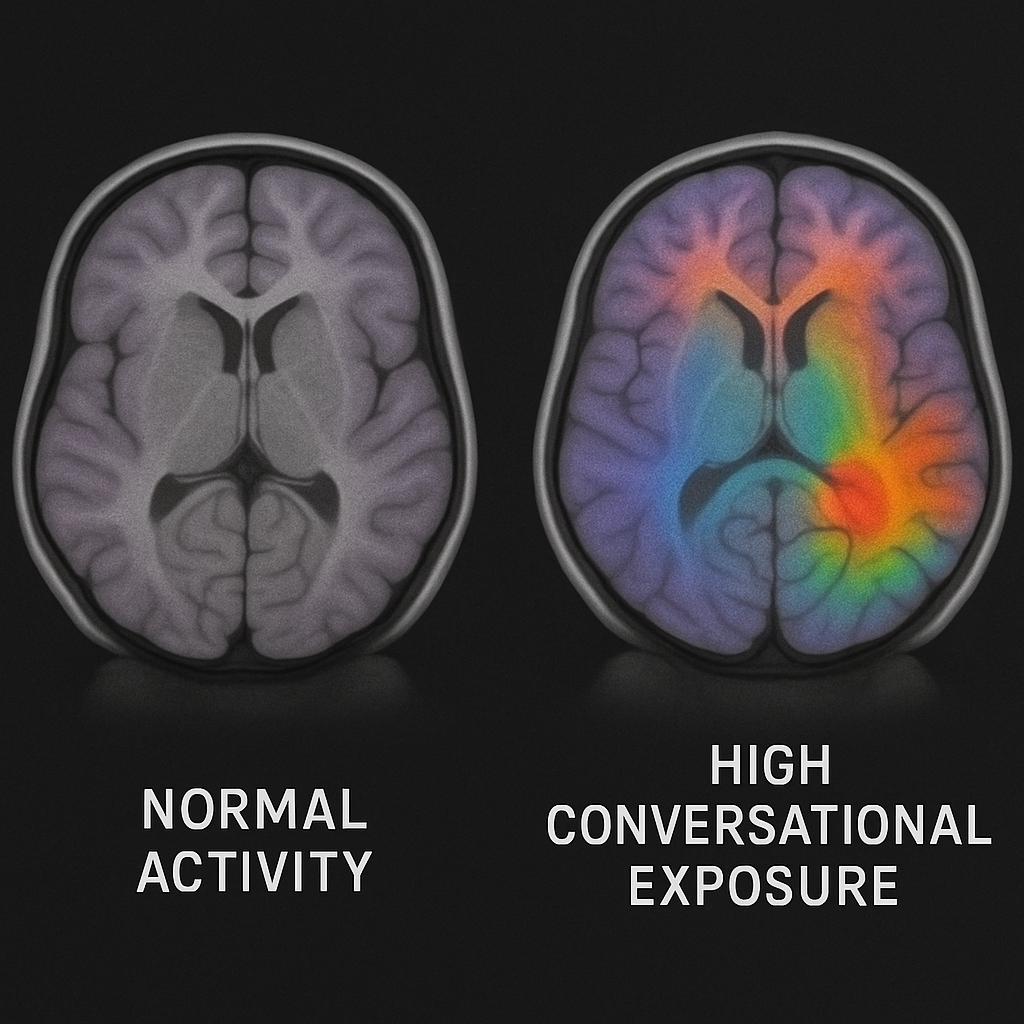Picture your baby’s brain buzzing with activity every time you respond to their coos or giggles. In the first three years, their brain forms over one million neural connections per second, laying the foundation for language, learning, and emotional growth. While exposure to words is important, it’s the back-and-forth conversations—those moments when you respond to your baby’s coos, gazes, or smiles—that spark the most significant brain growth. Research from MIT shows that these “conversational turns” strengthen language circuits and boost cognitive development.
- How does talking to my baby build new brain connections?
- What Happens Inside the Brain?
- When do babies actually understand the words they hear?
- What matters more—word quantity or conversation quality?
- How can everyday moments turn into brain-building chats?
- Tips to Amplify Impact
- Which evidence-based techniques give the biggest language lift?
- What if our family situation is different?
- Your quick questions, answered
- Why every conversation today shapes tomorrow
How does talking to my baby build new brain connections?
Every time you respond to your baby’s babble or smile, you trigger neural growth. fMRI studies from MIT found that babies with 100 more daily conversational turns showed 40% stronger activation in Broca’s area, the brain’s speech center, by age three. These exchanges do more than teach words—they rewire the brain for learning and connection.
What Happens Inside the Brain?
- Electrical Bursts: Each conversational turn sparks electrical activity in language and social brain regions.
- Myelin Growth: Repeated interactions lay down myelin, an insulating layer that speeds neural signals, making word processing faster.
- Dense Pathways: Frequent turns create robust neural networks, supporting larger vocabularies and faster comprehension.
- Emotional Boost: Eye-to-eye chats release oxytocin and dopamine, cementing learning and bonding.
Babies hearing lively, child-directed speech (known as “parentese”) process familiar words 25% faster than peers exposed to adult-directed talk, even by six months.

When do babies actually understand the words they hear?
Babies grasp words earlier than you might think—long before they can speak. By 24 weeks in utero, fetuses recognize the rhythm of their mother’s voice. At birth, they prefer this familiar cadence. By six months, eye-tracking studies show babies fixate on a pictured “ball” just 600 milliseconds after hearing the word, with faster responses in babies exposed to frequent, interactive talk.
Check expected milestones in the first year with our month-by-month guide at Baby Language Milestones.
What matters more—word quantity or conversation quality?
Both the number of words and the quality of interactions matter, but quality has a unique power. The “30-Million Word Gap” study showed that word exposure predicts later academic success. However, newer research reveals that 90 or more conversational turns per day can double vocabulary by age two, even in diverse socioeconomic settings. Beyond the 30-Million-Word Gap: Children’s Conversational Exposure Is Associated With Language-Related Brain Function. Quality conversations close gaps by fostering engagement and responsiveness.
Use the “Three T’s” to make chats impactful:
- Tune In: Notice what catches your baby’s eye, like a toy or sound.
- Talk More: Label objects, describe actions, and expand on their interests.
- Take Turns: Pause for coos, gazes, or smiles to create a dialogue.
Learn more about this research at The 30 Million Word Gap.
How can everyday moments turn into brain-building chats?
Ordinary routines are perfect for brain-building chats. Narrate your day in real time to spark language development:
- Dressing: “Let’s pull on your blue socks—soft and cozy!”
- Grocery Shopping: “Look at the red apples! Should we pick one?”
- Diaper Change: “Wipe, wipe, all clean—does that feel cool?”
Tips to Amplify Impact
- Label and Pair: Combine nouns and verbs (e.g., “The dog runs”) to speed semantic mapping. Labeling Objects.
- Use Parentese: Speak in a sing-song tone with real words to highlight sounds, transitioning to adult grammar after 18 months; see Parentese.
- Pause for Responses: Wait for your baby’s coo or smile to create a “turn,” fostering dialogue.
- Sing Nursery Rhymes: Rhythmic songs like “Twinkle, Twinkle” reinforce phonetic patterns.

Which evidence-based techniques give the biggest language lift?
Small habits yield big results for your baby’s language development:
- Reading Aloud: Starting at birth, reading adds about eight new words per week—see Reading to Your Baby.
- Baby Sign Language: Signs like “milk” or “more” reduce frustration and speed spoken words by providing visual cues.
- Bilingual Exposure: Regular use of two languages strengthens executive function, enhancing focus and flexibility.
- Limit Screens: Infants under 18 months learn minimal words from TV alone, as live interaction drives language growth—details at Screen Time and Speech Delay.
What if our family situation is different?
Even busy parents can make a difference with just five focused minutes of interactive talk daily. Micro-talks during feedings, car rides, or stroller walks add up. For families with unique circumstances:
- Multiple Children: Involve siblings in conversations to model language and turn-taking.
- Working Parents: Use short bursts of talk during routines, like bath time or bedtime stories.
- Multilingual Homes: Consistently use each language in responsive, face-to-face interactions for maximum benefit.
- Access to Resources: Free library story hours, text-based coaching apps like Vroom, or community playgroups provide rich language exposure. See Vroom App for Language.
Early intervention is effective—if you notice delays, consult your pediatrician for tailored support.
Your quick questions, answered
-
Can my baby learn from podcasts or audiobooks?
No. Without live, back-and-forth interaction, the language centers stay mostly quiet. -
Will “baby talk” delay real speech?
Used properly, parentese helps. Speak in sing-song tones but with real words; add complex sentences after 18 months. -
How many languages are too many?
Up to three is fine as long as each gets regular, responsive use from fluent speakers. -
When should I worry about speech delay?
See your pediatrician if there’s no babbling by 9 months or no single words by 15 months.
Why every conversation today shapes tomorrow
Every coo, smile, or word you share with your baby lights up their brain, building neural pathways for language, learning, and connection. By using the “Three T’s” during daily routines, you’re laying the foundation for reading, problem-solving, and emotional resilience. Start with a chat during your next diaper change, and explore more tips at Helping Your Baby Say First Words. Every chat you share today lays the neural track your child will travel for reading, problem-solving, and friendship tomorrow—one joyful conversation at a time.